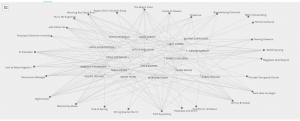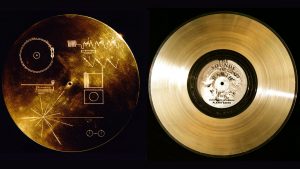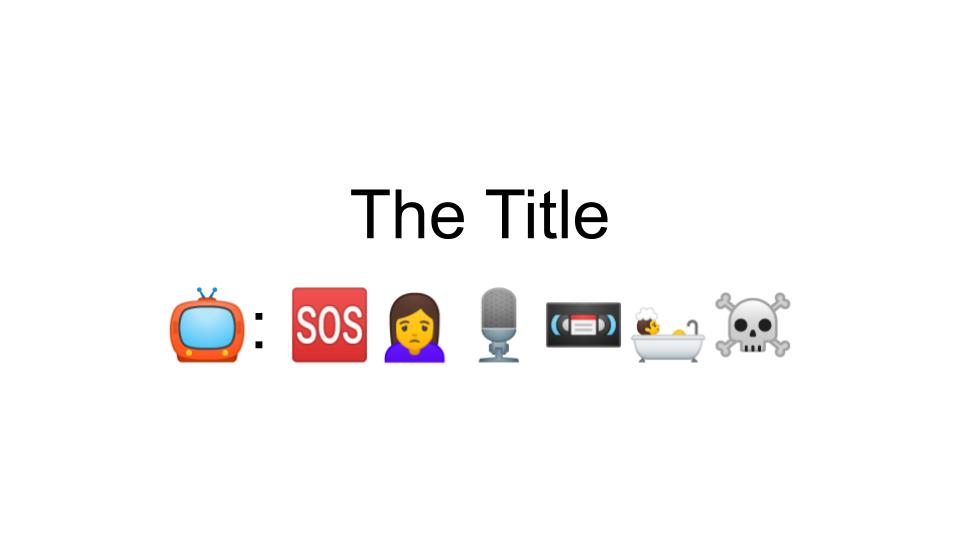For my last linking post #6, I’ve decided to link to Jamie Ashton as both our Final Projects spoke to the Hashtag.
You can find Jamie’s final project HERE, and my final project HERE.
Summary
Jamie created her final project using a slide deck and saved it to a PDF for easy viewing on any device – though apparently mobile is the best way to view it. Each slide had an image or two, placed beside written text with some keywords or phrases bolded to make an impact on the reader. Through wittiness and rich history, she explains where the symbol originated, “libra pondo,” and how it has evolved into what we know now the “hashtag.” Furthermore, she speaks about educational literacies and how the hashtag might, or might not, have a role to play. She ends off by showcasing the different usages and names that the symbol has represented over the years and asks her readers to see if they can determine why.
Reflection
What a fitting end to a great conversation. Throughout the course – Jamie and I have responded to each other’s posts on multiple occasions – Jamie even linked to my emoji story earlier on. She has provided me with opportunities to reflect on my posts through her rich analysis and reflection of my writing – and this last linking assignment seems quite fitting as we both have chosen to discuss the hashtag – though it’s been done in a different medium and with different information. In fact, I would say that Jamie has undoubtedly provided a Wikipedian description, whilst I have dug deeper into an Oxford Dictionary definition of the Hashtag.
While both Jamie and I chose the “Hashtag” as our main topic, we each took a very different approach to how we shared the information. I believe that choosing a medium where her writing could shine was a smart and obvious choice for her based on the information she has shared on her personal blog space. Jamie has a major in Linguistics, part of which focuses on semiotics, and along with her religious studies degree which involved history/anthropology/sociology/media/economy and politics of religion – a final project on the evolution of the hashtag fits perfectly. While I chose to do a podcast, again this could potentially be an obvious choice for me since for 2 previous tasks I chose to create audio versions using my own voice to share information. Even though our mediums are different, looking at it through this lens shows a connection to our own prior knowledge and preferences.
The choice of using a slide deck allows Jamie to handpick the images that she wants her readers to see – almost creating their connections for them, while in a podcast, the images are left to the listener’s imagination or own prior-knowledge of what is being discussed. Neither is better than the other as they both provide different experiences – however, for what is being discussed, I think Jamie chose a great medium. I also think that a video documentary would have added to her project more – as I think that hearing a voice speak the words provides a deeper connection to the text. Vice versa, if my podcast has been video recorded as well, I could have imputed images into the video version, thus allowing for a similar experience that Jamie is able to provide. The constraints of the course design allowed for us to choose our medium, however, I’m not sure which medium Jamie’s deck fits into – which leads me to believe that she spoke to our instructor to come up with requirements for it.
On a final note, something I did find interesting was when she said that hashtags are now shifting, “taking grassroots groups and moving them into the digital realm for global audiences to participate in.” This is exactly what Messina had wanted all along, to allow “anyone who could write text on the internet to participate in global conversation.”










 I found this task quite challenging actually. I wanted to make sure that I was being truthful and actually using the last movie, tv-show, or book that I watched or read. I had three options and went back and forth between just two of them. At first, I thought I could use the words in the title, but I couldn’t find any emojis that I believed would translate well without breaking the rule of doing something orthographically. Within the first word of the title I chose, the viewer would have most likely known right away, so I had to be more creative. I then switched back to my other choice and tried it with syllables. This worked, but when I tested it out on some friends, they associated the emojis I was using differently than I did. If the viewer doesn’t understand the expression I might be using, let’s say a multi-syllable word broken down into two emojis; i.e. Spider emoji, Man emoji, for Spiderman, then the emojis are rendered useless for this particular viewer. Their association with the various emojis is important in order to get my point across. In the end, I opted for a combination of ideas and words for both the Title and the Plot.
I found this task quite challenging actually. I wanted to make sure that I was being truthful and actually using the last movie, tv-show, or book that I watched or read. I had three options and went back and forth between just two of them. At first, I thought I could use the words in the title, but I couldn’t find any emojis that I believed would translate well without breaking the rule of doing something orthographically. Within the first word of the title I chose, the viewer would have most likely known right away, so I had to be more creative. I then switched back to my other choice and tried it with syllables. This worked, but when I tested it out on some friends, they associated the emojis I was using differently than I did. If the viewer doesn’t understand the expression I might be using, let’s say a multi-syllable word broken down into two emojis; i.e. Spider emoji, Man emoji, for Spiderman, then the emojis are rendered useless for this particular viewer. Their association with the various emojis is important in order to get my point across. In the end, I opted for a combination of ideas and words for both the Title and the Plot.